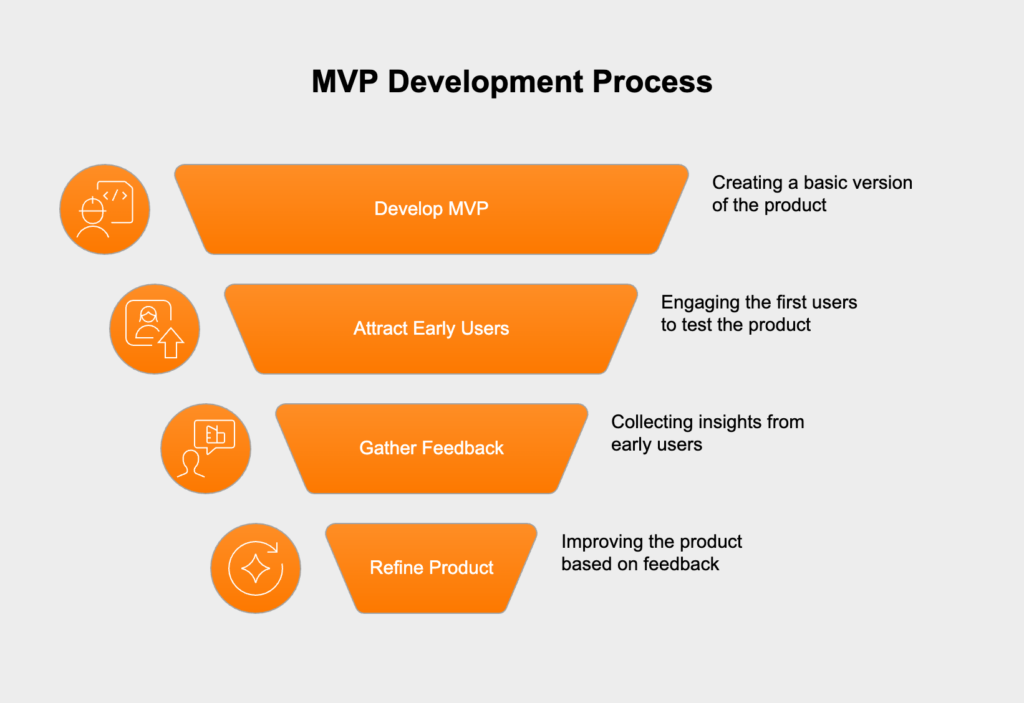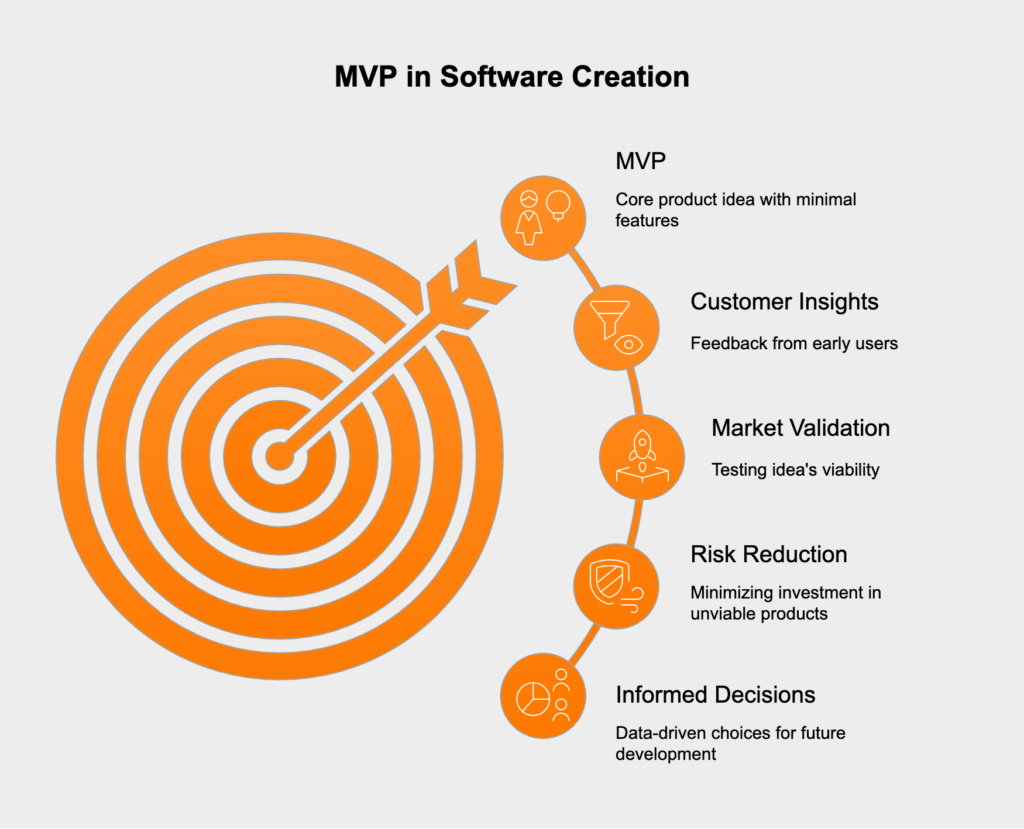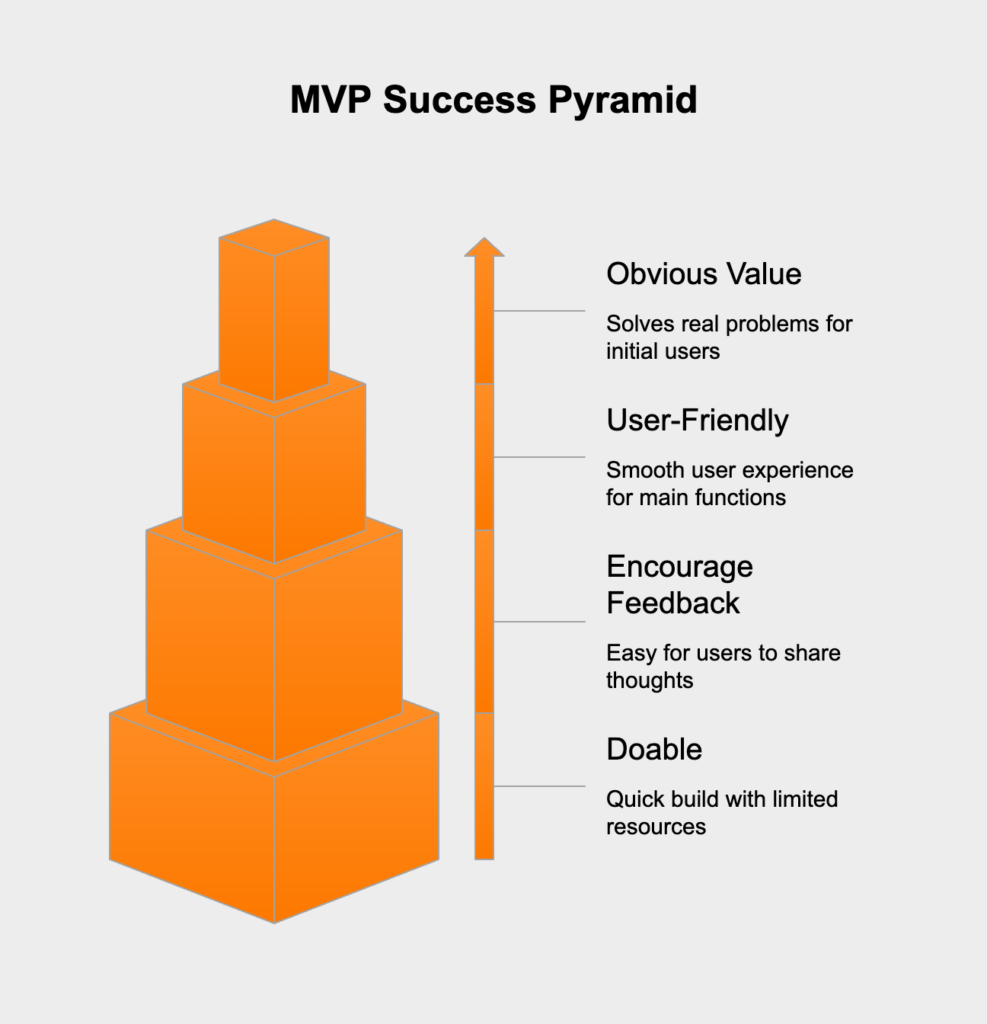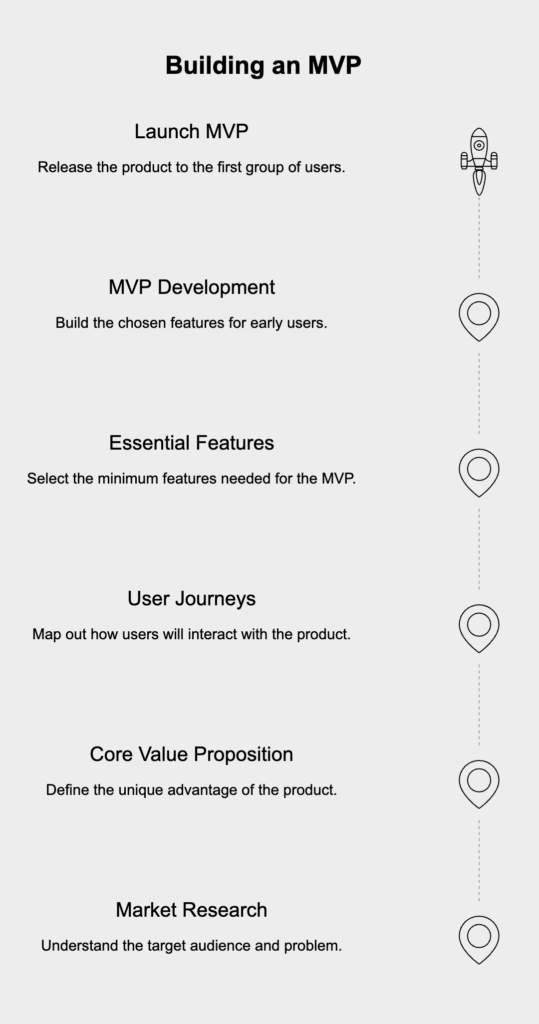How do Agile and DevOps Interrelate?
- January 16
- 9 min

A Minimum Viable Product (MVP) is a version of a new product designed to help a team learn as much as possible about customers, as efficiently as possible. Frank Robinson first coined the term, but Eric Ries really brought it to the forefront with his Lean Startup methodology.
An MVP isn’t just a stripped-down product; it’s a smart strategic move. It has to offer enough real value to draw in those first users and actually work for them. What these early users say then helps shape and polish the product over time. The ‘viable’ part is key—it has to genuinely solve a user’s problem and provide a decent, even if simple, experience to get useful feedback.

In software creation, a Minimum Viable Product (MVP) is all about testing a core product idea with minimal resources and effort. Its main goal is to get solid insights about potential customers and see if an idea can fly in the market. By launching a version with just the core features that early users can actually use, teams can get vital feedback that shapes what comes next. This approach dramatically slashes the risk of pouring time and money into something no one will use. It allows businesses to make smart choices using real data, not just guesses, making sure what’s built truly matches what users need and the market wants.

An effective MVP has a few key traits. First off, it must deliver obvious value to its initial users by tackling a real problem or meeting a clear need. Second, it needs to be user-friendly enough for people to do the main thing it’s built for, smoothly, even if it’s basic and advanced features are missing. Third, it should be built to encourage feedback, making it easy and natural for users to share what they think, which provides data for future improvements. Lastly, an MVP must be doable—quick to build with limited resources, so you can get to market and start learning fast. It’s all about the essential functions, not a mountain of features.

While they’re all part of early product development, an MVP, a prototype, and a proof of concept (PoC) aren’t the same thing and have different jobs. A Proof of Concept (PoC) is mainly about checking if an idea is technically doable. It’s often not something users will see or use directly and might not be functional in a broader sense. Then you have a prototype, which is more like a hands-on model. It shows how the product might look and feel, great for internal checks, some user testing in controlled settings, or fine-tuning designs. It usually doesn’t have all the behind-the-scenes tech working. An MVP, however, is a real, working product. Sure, it’s basic, but it’s out there with actual users in the real world. The big goal here isn’t just to show it works, but to test if people actually value what it offers and to learn from how they use it and what the market demands.
Adopting an MVP strategy comes with some big pluses for businesses, especially when you’re navigating the tricky waters of creating something new. It gives you a clear path to learn and adjust as you go, helping businesses create products people actually want by zeroing in on user needs right from the start. You’ll see perks in figuring out if your idea has legs, in real business results, and even in making the development work smoother.
An MVP is a fantastic way to actually check if there’s a market for your idea and test your main business theories directly with real people. Rather than sinking a ton of money into a complex product built on guesswork, an MVP lets you put a simpler version out to the people you want to reach. How these first users interact with it, what they do, and what they say gives you solid proof about whether you’re solving a real problem for them and if they like your solution. This whole thing helps you prove or disprove your initial hunches without betting the farm, and gives you clues about what users really need in the design before you spend big.
Launching an MVP offers some major wins for a business. It gets you to market much quicker, so you can make your mark and start learning from actual users way earlier than if you built out a whole product. Getting in early like this can really give you an edge over competitors. Plus, MVPs usually mean a smaller initial investment, saving you money and cutting down financial headaches. Having a real product, even a simple one, and some early user feedback can be a game-changer for wooing investors and getting funding. And all the information you gather helps you make smarter, data-backed choices for what to build next, so you put your efforts into building features people actually care about.

The MVP approach really streamlines how software gets made by encouraging a focused, step-by-step process. It means developers can sidestep a lot of potentially wasted effort on stuff users might not even care about. Getting a basic version out fast lets teams collect feedback on something real, so they can tweak and improve features based on what users actually say, not just guesses. This cycle of building, seeing what happens, and learning from it constantly tests and confirms what the product really needs, right from the get-go. It also means the product is always being tested and improved, ending up stronger and much more in tune with what users want.
When teams set out to build an MVP, they usually zero in on the absolute core value they want to offer and the must-have features needed to get that value to their first users. The whole thing is often steered by the Build-Measure-Learn feedback loop, a key idea from the Lean Startup world. This loop is all about moving fast, learning real things from users, and making sure development work stays locked onto user needs and market reactions. The aim is to get a working product out there fast, see what happens, and then use that real-world data to decide: change direction (pivot), keep going, or maybe even scrap the idea. Developing an MVP usually follows a few key steps:
Remember, this whole process circles back on itself; what you learn from the launch helps you decide what to build or tweak next.

Once an MVP is out there, what users say becomes gold for figuring out what to do next. Teams use all sorts of ways to gather this feedback – think surveys, chats with users, watching how people use the product through analytics, A/B tests, and just direct messages. All this info, whether it’s opinions or numbers, gets carefully sifted through to spot trends, frustrations, and what features people are really asking for. What they learn from all this directly shapes decisions on new features to build, how to tweak or even ditch current ones, and if the whole product idea needs a rethink (that’s a pivot). Constantly weaving in this feedback means the product grows and changes based on what users genuinely need and like, giving it a much better shot at succeeding in the market.
Plenty of big names kicked off with a really basic MVP to see if their main ideas held water. Take Dropbox, for example. They famously started with just a video showing off how their file-syncing would work. That simple video was all it took to prove people were interested and get those first sign-ups, long before the actual software was ready. Then there’s Zappos. The founder began by snapping photos of shoes in local shops and putting them up online. If someone ordered, he’d dash out, buy the shoes, and mail them off. This was a lean way to test if people would actually buy shoes online without trying them on, all without needing a warehouse full of stock. For a software example, imagine a scheduling app. Its MVP might just let you create and book meetings—that’s it. Fancy extras like calendar links, reminders, or group scheduling would wait until users showed they really wanted them.
Going the MVP route really shines when you’re facing a lot of unknowns, like whether people will want your product, what they truly need, or which features will click. It’s a fantastic fit for startups and new businesses trying to launch something fresh, especially if there’s no existing market or clear path to follow. An MVP lets these companies try out their business plans and product concepts without risking too much money or time. Even bigger, established companies find it useful when they’re exploring new markets or creating completely new types of products. Plus, if you’re tight on time or money, an MVP helps you concentrate on getting the most important stuff out there fast and effectively. It’s great for checking if a new business idea could work, or even for adding big new features to an existing product bit by bit to see how they land.
People often misunderstand a few key things about MVPs, which can lead to them being used the wrong way. One biggie is thinking an MVP is just a shoddy or half-baked product. Sure, it’s basic, but that ‘viable’ part is crucial—it still needs to work well, be dependable, and offer a decent experience for what it’s designed to do. Another mix-up is seeing it as just ‘minimum features’ without any real plan for learning something. The real goal is actual learning from real users, not just cutting features. Some folks also think the first thing you release is *the* MVP, full stop. But really, it’s usually just the beginning of a cycle, with more versions coming as you get feedback. And lastly, don’t confuse it with just being the absolute cheapest thing you can make; it’s about the smartest, leanest way to learn the most.
As great as MVPs can be, they’re not without their potential hiccups and hurdles. For instance, if your MVP is too bare-bones or just plain bad, it could turn off early users right away. That might hurt your brand or make people write off a good idea too soon. You also run the risk of reading user feedback the wrong way or chasing the wrong numbers, which can send your development off track. Then there’s scope creep – that temptation to add ‘just one more thing’ before you launch, which can water down the MVP’s point and slow down your learning. Putting an MVP out there can also tip off your competitors to your cool new idea. If you’re slow to improve it, they might just swoop in with something better, faster. And sometimes, just getting your own team or company on board with an MVP can be tough, especially if they’re used to big, feature-packed product releases.
